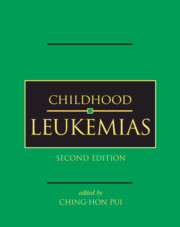Book contents
- Frontmatter
- Contents
- List of contributors
- Preface
- Part I History and general issues
- 1 Historical perspective
- 2 Diagnosis and classification
- 3 Epidemiology and etiology
- Part II Cell biology and pathobiology
- Part III Evaluation and treatment
- Part IV Complications and supportive care
- Index
- Plate Section between pages 400 and 401
- References
1 - Historical perspective
from Part I - History and general issues
Published online by Cambridge University Press: 01 July 2010
- Frontmatter
- Contents
- List of contributors
- Preface
- Part I History and general issues
- 1 Historical perspective
- 2 Diagnosis and classification
- 3 Epidemiology and etiology
- Part II Cell biology and pathobiology
- Part III Evaluation and treatment
- Part IV Complications and supportive care
- Index
- Plate Section between pages 400 and 401
- References
Summary
Introduction
Since its initial recognition 150 years ago, leukemia has been the focus of remarkable research activity and consequent progress. The drama of its manifestations, its frequency in children, its commercial importance in animal husbandry, its usefulness in understanding hematopoiesis, and its ready adaptability as a model for other human cancers are among the reasons for this attention. But perhaps more important for the current generation of its students was the discovery 30 years ago that the most common variety of leukemia could be cured in approximately one-half of children, the first generalized cancer to be cured and the first autologous cancer to be cured with chemicals. This chapter summarizes the history of the study of leukemia, particularly childhood leukemia, with regard to description, causation, and treatment. It concludes with comments about the lessons taught by this history.
Description of leukemia
Although the first description of a patient with leukemia was published in 1827, it was not until 1845 that Virchow in Germany (Fig. 1.1) and Bennett and Craigie in Scotland, in separate case reports, recognized it as a distinct disease, “white blood.” Two years later, Virchow introduced the term “leukemia” for this entity and proceeded on a series of investigations that were summarized in 1856. He distinguished leukemia from leukocytosis and described two types: splenic, associated with splenomegaly, and lymphatic, associated with large lymph nodes and cells in the blood resembling those in the lymph nodes.
- Type
- Chapter
- Information
- Childhood Leukemias , pp. 3 - 20Publisher: Cambridge University PressPrint publication year: 2006

